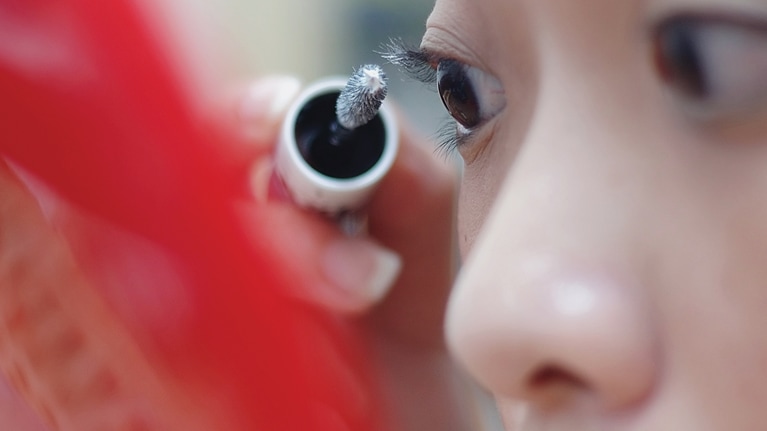Another Singles Day, another shattered record. Despite China’s rising living costs, the trade war with the US, and slowing income and retail sales growth, consumers spent tens of billions of dollars this year on what is now enshrined as the world’s largest shopping holiday. On November 11, Singles Day generated $58 billion (RMB 410 billion) in gross merchandise volume (GMV) in a 24-hour period, jumping 31 percent over 2018. And like previous years, spending on Singles Day eclipsed the U.S.-based shopping holidays of Cyber Monday and Black Friday. Total online sales for the holiday weekend—spanning the five day period from Thanksgiving to Cyber Monday—was $28 billion in 2019.
As the creator of Singles Day, ecommerce giant Alibaba continues to lead the way. Kicking off the event with an opening gala that featured a performance by Taylor Swift, Alibaba captured 66 percent of sales through its family of websites and apps. Other platforms also performed well with their own Singles Day offerings. Leading online retailer JD.com’s share held steady at 17 percent, while Pinduoduo, which targets smaller cities and lets users participate in group buying deals, doubled its share of Singles Day sales this year from 3 to 6 percent.
Several new, noteworthy trends emerged this year. Live streaming and consumers in China’s smaller cities functioned as significant drivers of Singles Day’s record-breaking growth. There were also two key takeaways for brands—Singles Day as a testing ground for product innovation and differentiation, and the boycott of American companies that never happened.
Live streaming is converting browsers to buyers
Much like Black Friday and Cyber Monday, consumers on Singles Day have come to expect a slew of steep discounts. But while discounts continue to be the biggest draw, consumers are also looking for new and entertaining ways to explore products. Driven by the wider adoption of 4G, video is emerging as a medium for more immersive and entertaining brand experiences. This year, roughly half of all merchants on Alibaba’s Tmall shopping site used live streaming to sell their products both during Singles Day and in the days and weeks leading up to the event. These video sessions featured celebrities, industry professionals, or key opinion leaders demonstrating products and answering questions from consumers in real time.
For many brands, it was an enormously effective strategy for driving high conversion rates. Singles Day sales from live streaming on Tmall and Taobao reached $3 billion, or 7 percent of Alibaba’s total. On Taobao, sales during live streaming surpassed those from last year within one hour. And this is only the beginning: Alibaba said it expects live streaming on its platforms to contribute at least $70 billion in gross merchandise value (GMV) between 2019 and 2021.
Live videos were particularly successful for beauty brands, driving 16 percent of category sales. Estée Lauder’s Singles Day live streaming, for instance, started on October 19th with beauty assistants appearing on the brand’s Tmall store and culminated in a marathon 20-hour streaming session. It also conducted live streaming with enormously popular influencers like Viya Huang and Austin Li. These efforts attracted 500 million views, drove $28 million in sales, and helped make Estée Lauder the top beauty pre-sale performer on Tmall. L’Oréal also boosted sales coming through its live streams by 7X over last year’s Singles Day. Finally, a livestream with Viya Huang helped Kim Kardashian West draw 13 million viewers to her Tmall site and resulted in her stock of KKW perfume selling out in just a few minutes.
Consumers in smaller cities are the new powerhouse of growth
After years of rapid growth, consumer markets in large affluent cities like Beijing, Shanghai, and Tianjin are entering into an expected period of maturity and slower growth. After all, some 85 percent of people in tier 1 and 2 cities already shop on Alibaba’s ecommerce sites Tmall and Taobao. This is not the case, however, in smaller cities such as Jiaozuo (in Henan province), Baoding (Hebei), Quanzhou (Fujian), and Xuzhou (Jiangsu). These tier 3 and 4 cities, where Alibaba’s penetration is only 40 percent, are emerging as important new sources of growth. Over the last two years, more than 70 percent of Taobao’s new users came from lower tier cities. This year, JD.com generated 80 percent of its Singles Day orders from smaller cities, driven in part by an average order size that swelled by 30 percent over last year.
The group-buying site Pinduoduo has been successful in reaching these lucrative consumers in lower-tier cities, and both Alibaba and JD now have marketplaces that compete with it. On Singles Day, JD’s new group buying app Jingxi accounted for 40 percent of the platform’s total new users, 70 percent of which were from lower tier cities. On Alibaba’s Juhuasuan site, 7,000 items racked up over a million orders and 576 items generated over 10 million orders.
A testing ground for new products and creative marketing strategies
This year, a record one million-plus new or newly packaged products were introduced on Tmall during Singles Day, accounting for 10 percent of the platform’s total and $6 billion in sales. The holiday represents a prime opportunity for product innovation in several ways. First, entirely new, high value items like Nike’s Air Jordan 5 Retro Sngl Dy sneakers and Huawei’s Mate 30 Pro phones, which sold more than 50,000 units in just the pre-sale, benefit from the huge volumes of Singles Day traffic. These items, which are relatively small in number, buck the Singles Day trend and are sold without discounts.
The vast majority of Singles Day innovations, however, feature a typical discount of 20 to 40 percent and are distinctive because of new packaging or a gift with purchase, or because they represent a new item within an existing product line. L’Oréal, for instance, offered consumers who bought Revitalift eye cream four free samples and, for the first 100,000 orders, packaging that featured actor Yilong Zhu. Promotions like these let brands test new concepts, gauge consumer response, and make quick adjustments.
Singles Day to American brands: Don’t worry
In the run up to this year’s Singles Day, word spread that Chinese consumers might boycott American brands. One poll suggested that due to trade tensions between the two nations, three-quarters of Chinese consumers were considering not buying American products. Judging by this year’s sales results among some American brands, however, these fears turned out to be overblown. The number of US brands hitting RMB 100 million in sales on Singles Day reached 46, compared with just 40 in 2018. Apple, Estée Lauder, Olay, and Nike were among 15 brands grossing over RMB 1 billion ($140 million) in sales. And in 2019, the United States once again ranked as the second-largest country of origin for cross-border sales into China during Singles Day, behind Japan.
Even though the growth in China’s ecommerce market is slowing, this year’s Singles Day performance suggests that the world’s largest consumer market is still a powerful economic force. Companies can use lessons from Singles Day to drive higher sales in China throughout the year. Brands that successfully target high growth consumers in lower tier cities and develop innovative consumer engagement models such as live streaming and other occasion-based approaches can continue to thrive.


